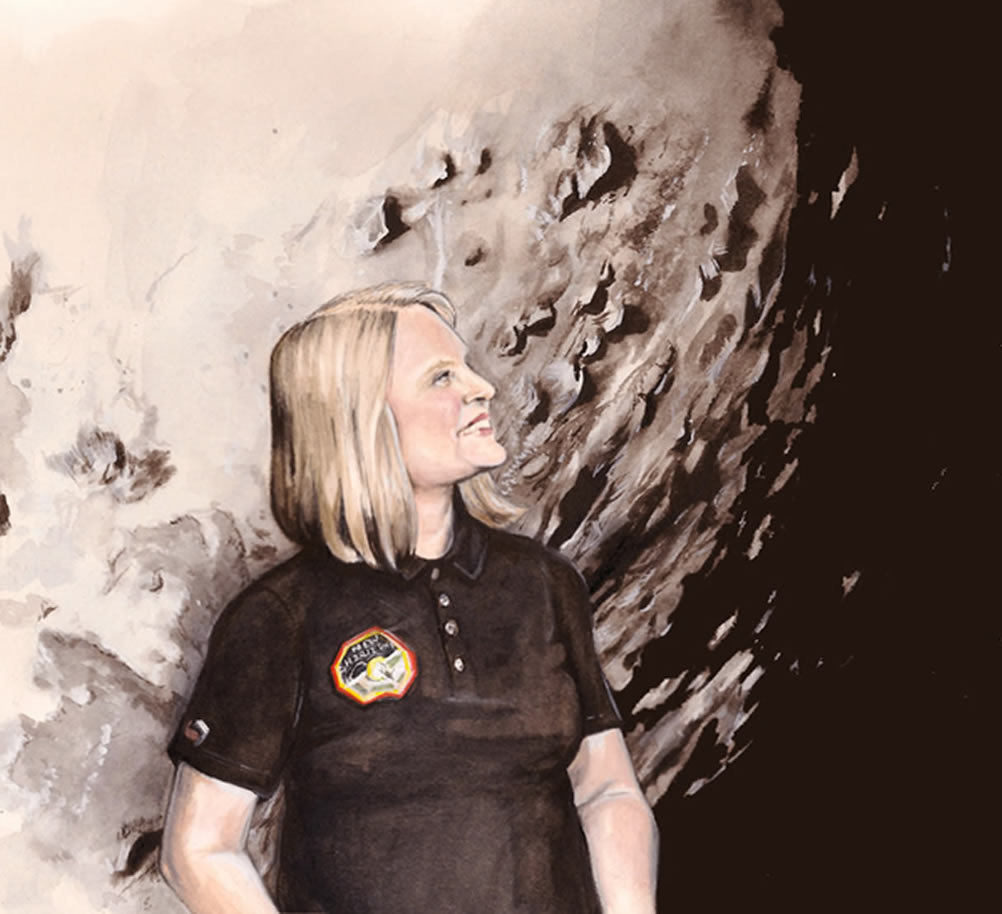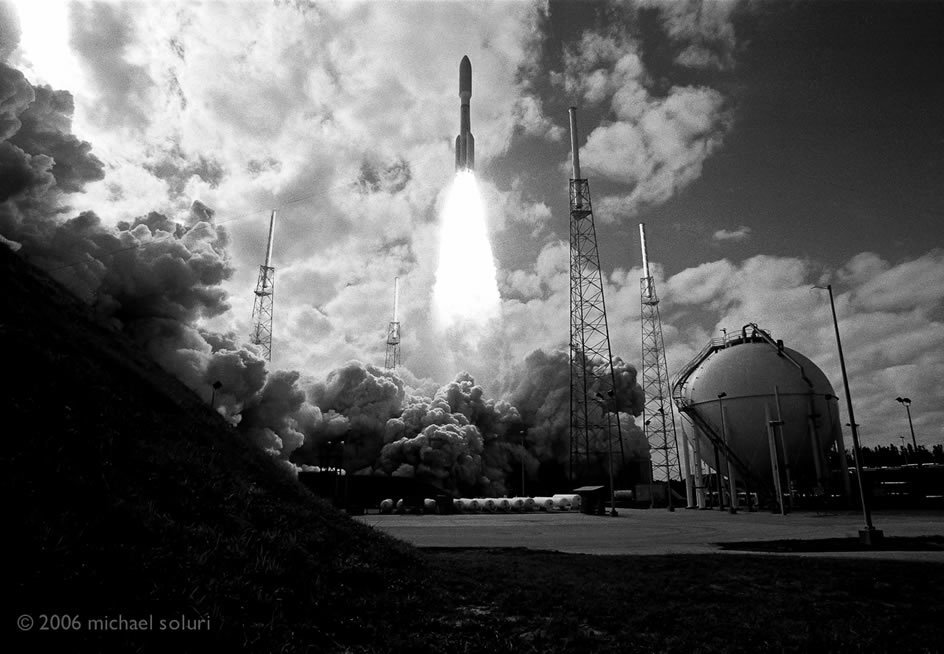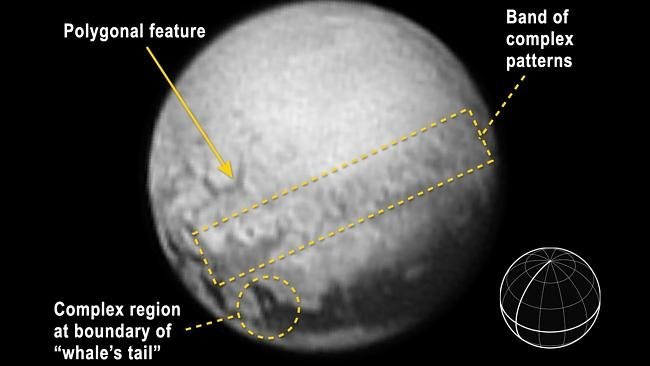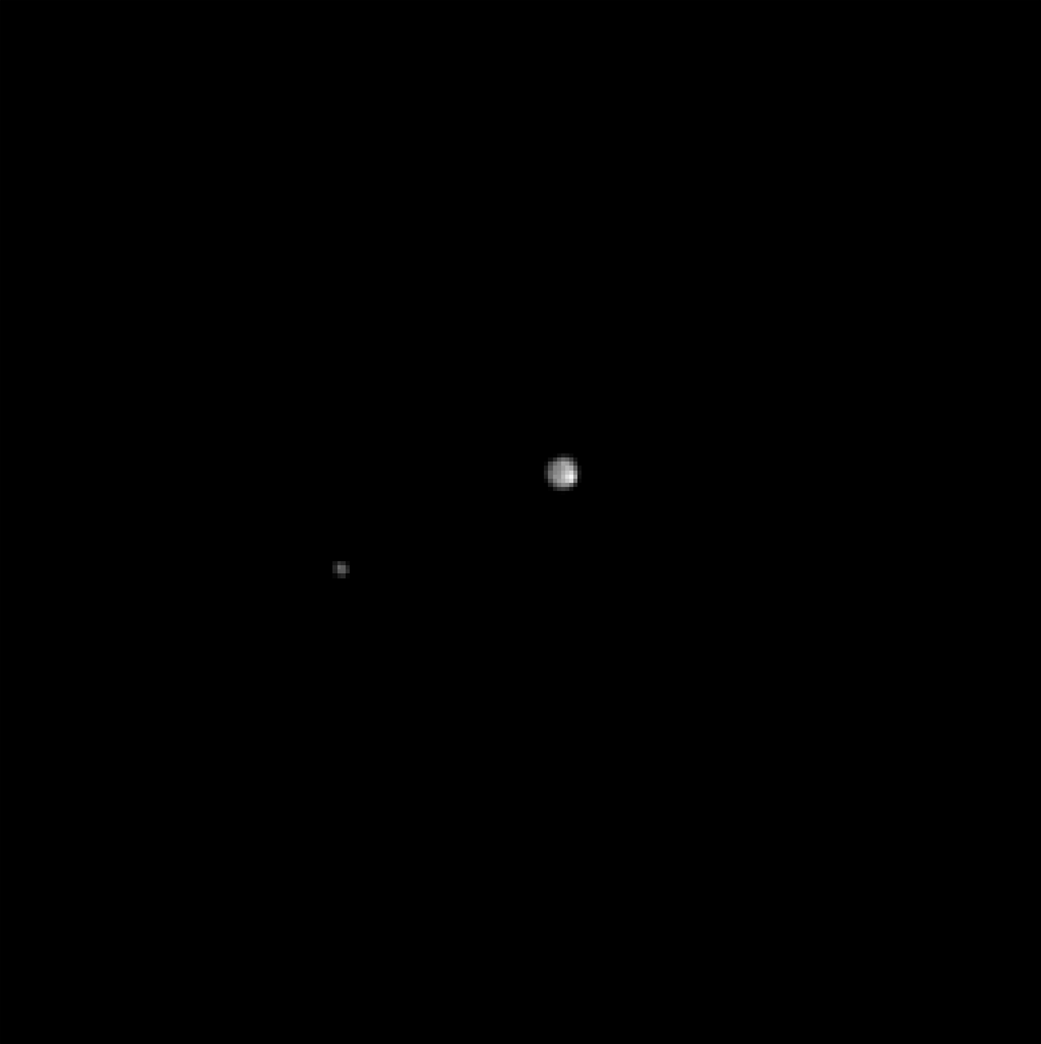On July 15, people all over the world watched a woman in a cubicle wait for a signal from three billion miles away. In a soft, clear voice, she confirmed that the New Horizons spacecraft had flown within 7,800 miles of Pluto and survived. In the following days, the spacecraft transmitted images that revealed for the first time what the surface of Pluto looks like. It has a smooth expanse just above its equator, some 1,000 miles wide, that resembles a bright, icy heart. It has frozen mountain ranges and spectral plains that may have only just formed. The detail of the photographs and the geological variety of Pluto exceeded all the hopes of NASA scientists. “I’m still having to remind myself to take deep breaths,” said one.
At the center of it all was Alice Bowman, the woman in the cubicle and the engineer who led the team that guided the spacecraft towards its destination. For a while on July 15, she was trending on Twitter. Some cheered her role as the first woman to oversee an operation so ambitious, one that seems to have had more women working on it than any other mission in NASA's history. Others wondered why her colleagues kept calling her Mom (it’s NASA shorthand for Mission Operations Manager). One week later, when I spoke to her, she was still stunned by all the attention. Her operation is one of brain-bending complexity, and she told me that it’s not always easy for her to translate what she does into words—at least words that most of us would understand. And she was noticeably uncomfortable discussing certain subjects, such as how the role of women in space exploration has changed since she entered the field in 1988. As she explained what it takes to move a small object through space, and everything that she’s seen along the way, what she conveyed most of all was a sense of pure wonder.
-
Rachel Morris: When you started working on New Horizons, in 2001, what was it that most interested you about Pluto?
-
Alice Bowman: What isn’t interesting? There’s the chance to go to a planet that hasn’t been explored and all of the challenges involved with that. You actually get into these neat physics concepts that you learn in school—the Doppler effect, using quasars to help navigate. There’s also round-trip light time—that’s how long it takes a command to go from Earth to the spacecraft and back. In order to receive data on Earth, you have to command the spacecraft to start sending it 4.5 hours earlier. Likewise, if you want to send something, you have to send it to a point the spacecraft is going to be in 4.5 hours. It’s like splitting your brain in half.
-
RM: Was there anything you particularly wanted to know about Pluto? Anything you really wanted to see?
-
AB: I would have been happy if the pictures just showed a gray planet, so I continue to be astonished. As a kid, you soak up all those pictures of Saturn, Mars, Mercury. But I hadn’t seen any of Pluto. My favorite one was taken on approach, and it was of the dark side of Pluto. We got closer, and there were all these craters swirling. People were calling them brass knuckles. I thought it was so unexpected, like a painting.
-
RM: It does seem that after the pictures came back, there was an outpouring of affection for Pluto. It was kind of an afterthought among the planets—the dwarf planet. But now we’re discovering that it has a tail, it has mountains…
-
AB: Well, everybody loves the underdog. I think that’s what we do as humans—we look for ourselves in things. And now we’ve seen Pluto with our own eyes. It showed up on our screens with a heart, and it was like, aww.
-
RM: Tell me how you first got into space exploration.
-
AB: Growing up, it was all over the news: the Gemini program, the Apollo program, the Mercury program. Every time Apollo would launch, we would watch it on TV, and when the moon landings happened—oh my goodness, that was amazing. That definitely inspired me. And after that you had all these science fiction series that came out, like Star Trek.
-
RM: Where were you for the moon landing?
-
AB: My mom let my sister and I stay up to watch it. We were on the couch in front of the black and white TV. I think we were in our pajamas, and I had my hands over my eyes because it was kind of scary as a kid. I peeked through my fingers as he stepped out. It just took forever for them to open that hatch.
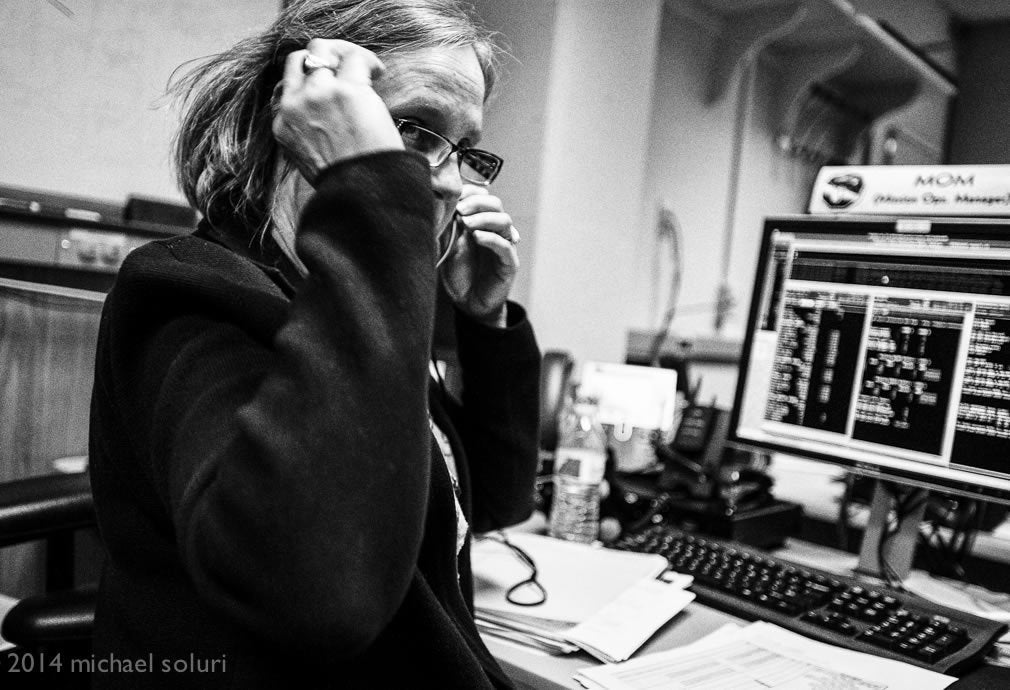
On Her Crazy Night After the Successful Mission
-
RM: And what was it about space that fascinated you?
-
AB: Science was a part of it, but I think it mostly was adventure. Venturing out into the unknown. I recently re-connected with a friend from high school who I hadn’t had any contact with for twenty years or so. And one of the things he said to me was: “It looks like you’re doing exactly what you told me you wanted to do in high school.” And he also said, “It was kind of a blow to my ego when you said you wanted to leave Earth and explore space.”
-
RM: Poor guy!
-
AB: I certainly didn’t mean it that way!
-
RM: Something I’ve noticed about your statements to the press is that you often refer to the care and feeding of the spacecraft, as if it’s alive in some way.
-
AB: I don't think we gave it a gender, but I do think of it as being like a child, going through phases. Like, it had the terrible twos.
-
RM: Why is that? Is it because it behaves differently as it goes further into space? Or is it that you’re learning more about how to operate it?
-
AB: It’s mostly the latter. You test as much as you can on Earth, but there’s no test to replicate space. You just need to study how it reacts. It’s kind of funny, because the spacecraft doesn't really have a mind of its own, but we talk about it like it does. Everything we put in there is what we want it to do.
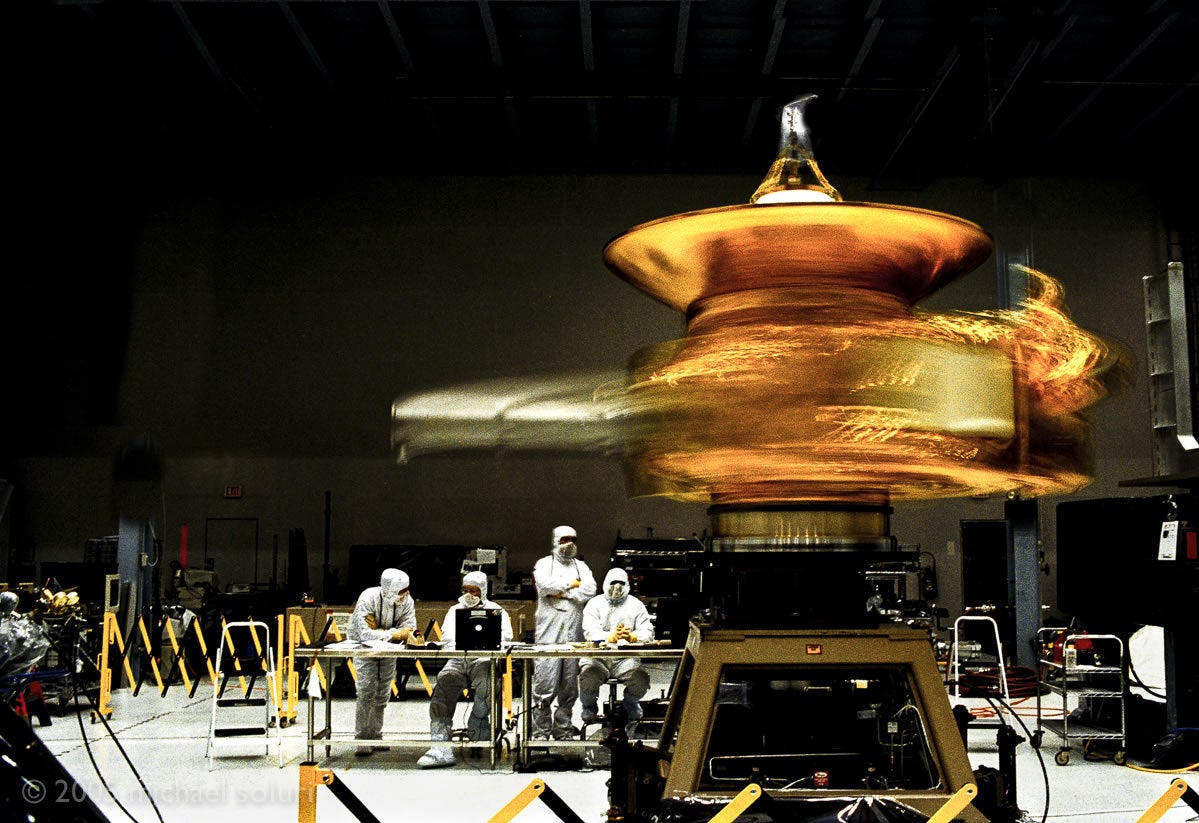
On Whether She Wants To Be An Astronaut
-
RM: I have no idea how the terrible twos might manifest in a spacecraft.
-
AB: Our first anomaly was that something was causing it to go into a “safe mode”—it reset. It took us a number of years to figure out what the problem was. There wasn’t anything happening on board that we could trace it to. And you don’t like to blame it on the space environment because in some ways that seems like a cop-out, you know? Because we’re in space!
-
RM: How do you fix something like that?
-
AB: Think about how your computer has programs, like Word or Excel. But it also has an operating system, something very basic to the computer. And so we found that we could trace a quarter of these resets to something deep inside the operating system. Which was very, very hard to detect. And we uploaded software to the spacecraft to fix it, but whenever you upload software to a spacecraft, there’s a risk involved because it’s traveling over billions of miles of space. And you’re basically updating its brain. It’s something you don’t like to do unless you have to, because there’s always the big issue of: if you fix it, will something else break?
-
RM: What’s impressive is the patience required for a mission like New Horizons. It takes you a couple of years to fix a computer glitch, it takes nine years to get to Pluto. What were some of the big revelations to keep you going along the way?
-
1 The 2007 flyby allowed New Horizons to use the planet’s gravity to boost it the rest of the way to Pluto.
AB: I thought Jupiter was just beautiful. Our instruments were designed for the lighting of Pluto. Jupiter was only practice for us. 1 But when the pictures came back, we got a notification from the Hubble telescope saying that they could see that one of the volcanoes on Io was erupting. 2
2 Io is Jupiter’s fourth-largest moon. -
RM: Does that look anything like a volcanic eruption on Earth?
-
3 Some volcanoes on Io are taller than Everest.4 Callisto, Jupiter’s second largest moon, is nearly the size of Mercury.
AB: Because the gravity is less and because the volcano is so huge, whatever is coming out of the planet goes way up into the atmosphere. 3 And as the particles shoot out, they freeze and rain down on the planet. Callisto looked really neat, too. 4 It looked starry to me, like it was lit from underneath. The universe is so beautiful. It touches your heart.
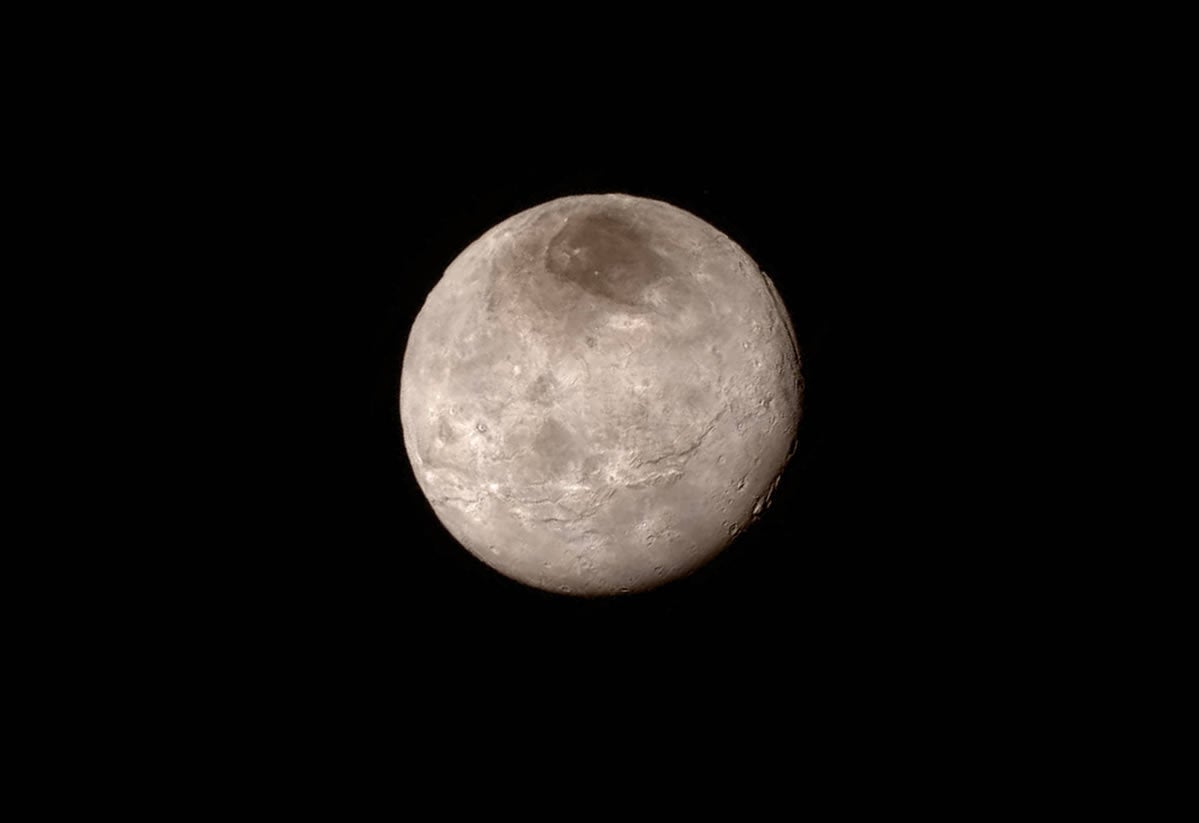
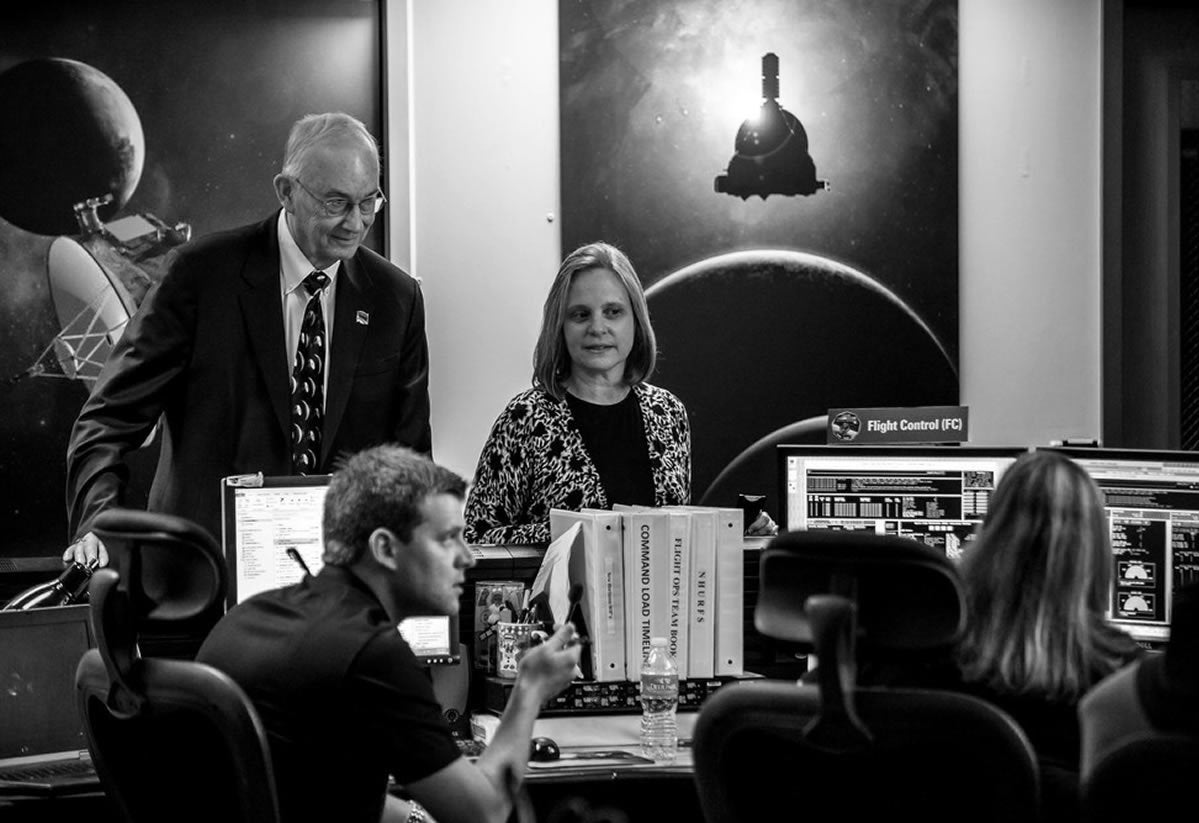
-
RM: So the spacecraft travels three billion miles to get to Pluto, and you have this very short window of time when it’s going to fly by the planet. And 10 days before that window is due to start, the spacecraft goes silent.
-
AB: That was a terrible feeling. We were sending commands to the main computer on the spacecraft. We watched the commands go into the computer and suddenly it lost the signal. It had happened before, but this time the signal didn’t come back, and we knew something wasn't right.
As a leader—we’re human, we have feelings, you can’t not have those. So you have them for a few minutes. And then you have to go about the task at hand. Many of us, 80 percent, had been on the project since the get-go. People knew what they needed to do. So we set out trying to get that signal back, walking through our algorithms. And when we locked the signal—oh my gosh, that was a great feeling.
-
RM: What did you do when that happened?
-
AB: Nothing profound. We just said, “Fixed it.”
-
RM: By now so many people have seen the video of you sitting at your desk and getting word that everything was working, and then the room erupting in cheers. Were you hesitant to let the camera in the room? What if something had gone wrong?
-
AB: In fact, it was one of those divisions. You have to make that choice—maybe everyone will get a chance to share in our joy. But you also have to be prepared if that other thing happens. I thought a lot about it and decided that it was worth a risk, that if something bad happened, we would just deal with it. This is what exploration is—sometimes things don’t go right.
-
RM: Is that something you and everyone else on the mission prepared yourselves for—that it could fail?
-
AB: Formally—we didn't talk about that. We may have said certain words so we all knew what we were trying to say without really saying it. But there were some things we didn’t even want to voice. We’re all a little superstitious.
-
RM: Once you actually made it to Pluto, was there a sense of letdown? “I went to another planet and now what am I going to do?”
-
AB: You know, I wondered about that. I wondered how I was going to feel or if I was going to have to get people through that. But I don’t feel like it’s over. Every day for the next sixteen months, we’re going to get something new from the Pluto system. Scientists will pore over the data—they’re going to be coming up with new theories for probably 10, 20 years.
-
RM: So many adults get their sense of wonder beaten out of them, but you still seem genuinely enchanted by what’s out there.
-
AB: I am. In our work, we can plan it out, but there’s so much that we just don’t know. And those pictures from Pluto are a testament to it. It’s like being a child again, when everything was new and pretty wondrous.
-
RM: So what’s next for the spacecraft?
-
5 The Kuiper belt is a cloud of debris left over from the solar system’s formation. About 2 billion miles across, the belt contains at least another 200 dwarf planets. One, Eris, is heavier than Pluto.
AB: I like to think of this as the phase where it’s gone off to college. It will continue on—it’s on a hyperbolic path, so it won’t come back. We hope to go to one of the objects in the Kuiper belt, 5 though we are getting farther and farther from Earth, which means our ability to change anything on board is so much harder. Navigationally it’s a challenge. The objects out there are also much smaller than Pluto. But Voyager 2 6 returned great data after Neptune, and our instruments are 30 to 40 years more technologically advanced than those. We estimate the spacecraft will have enough power to operate until about mid-2030s.
6 Launched in 1977, Voyager 2 is the only spacecraft to have visited Uranus and Neptune. Both 1 and 2 are now somewhere in interstellar space and still transmitting. -
RM: And you’re going to stay with the mission?
-
AB: Oh, I don’t have any plans to go anywhere. It’s neat to say you shepherded a spacecraft out into the solar system.

